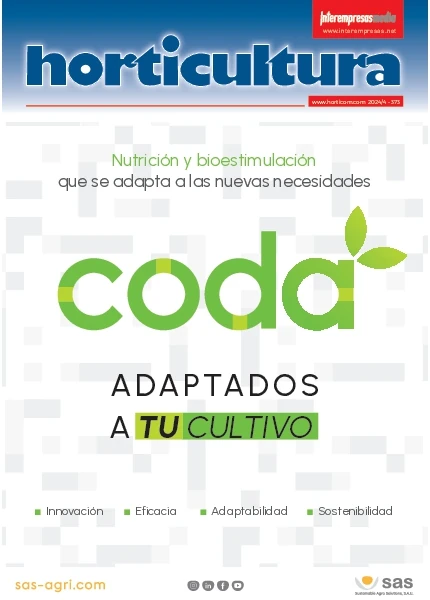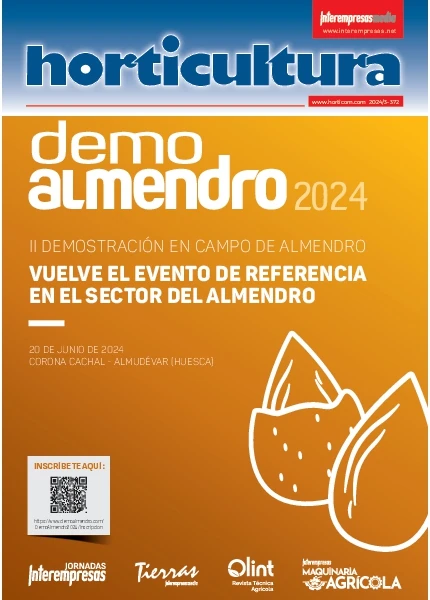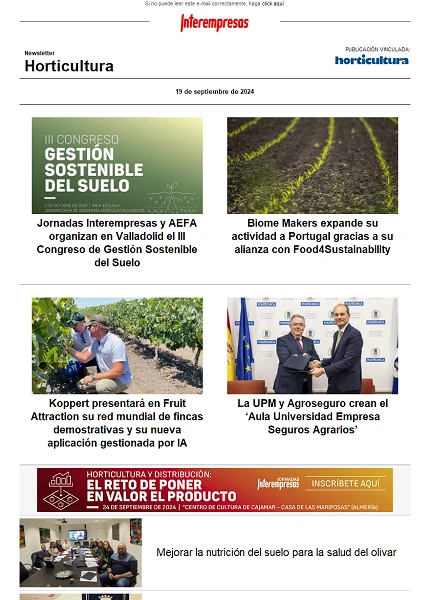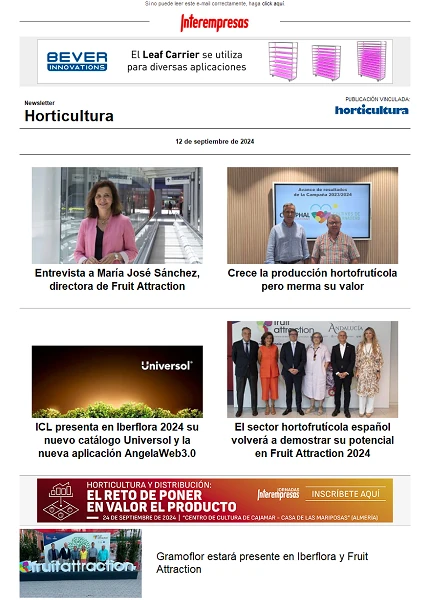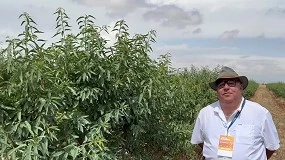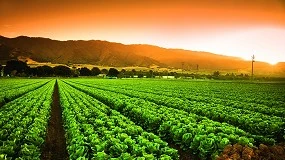Parámetros de calidad en calabacines
¿Se pueden predecir los compuestos fenólicos en calabacín mediante espectroscopía NIRS?
El interés de la industria alimentaria por satisfacer las demandas del consumidor hacia productos sanos, saludables y con alto contenido nutricional, da lugar a un continuo desarrollo de cultivares capaces de adaptarse a las diferentes condiciones ambientales. Tal es el caso del calabacín (Cucurbita pepo spp. pepo), caracterizado por mostrar una gran variabilidad morfotípica y elevados contenidos en compuestos antioxidantes, entre los cuales se incluyen los compuestos fenólicos. En la actualidad, son diversas las técnicas que pueden ser empleadas para cuantificar el contenido en compuestos fenólicos totales (CFT) en hortalizas, tales como la Cromatografía Líquida de Alta Resolución (HPLC) y la Espectrofotometría UV-VIS. Sin embargo, son escasos los trabajos en los que se ha estudiado el potencial de técnicas rápidas y no contaminantes como la espectroscopía por reflectancia en el infrarrojo cercano (NIRS) para la cuantificación de estos compuestos en vegetales. Dicha técnica se caracteriza por ser limpia, no usar reactivos y ahorrar tiempo de análisis. Por estos motivos, su aplicación en la industria alimentaria se ha incrementado en los últimos años.
El objetivo de este estudio es determinar el potencial de la tecnología NIRS para predecir los compuestos fenólicos totales de cultivares en calabacín, así como determinar los tratamientos matemáticos que mejores predicciones realicen de estos compuestos. El estudio se llevó a cabo sobre 65 muestras de exocarpo, 120 muestras de mesocarpo y 185 muestras que formaban el conjunto de calibración de exocarpo + mesocarpo pertenecientes a 14 accesiones y 17 variedades comerciales de calabacín, cultivadas en el Centro Ifapa La Mojonera (Almería, España). Las muestras fueron congeladas y liofilizadas y posteriormente molidas. Los espectros Nirs fueron registrados con un equipo NIRS (Foss NirSystems model 6500), en modo de reflectancia, registrándose los espectros cada 2 nm en el intervalo de 400-2.500 nm (región visible e infrarroja). Las ecuaciones de calibración y el tratamiento quimiométrico de los datos se llevó a cabo mediante el empleo de la aplicación Winisi II (v. 1,50 Infrasoft International).
Los coeficientes de determinación obtenidos en la validación (r2cval) para los CFT fueron 0,75 (mesocarpo) y 0,66 (exocarpo+mesocarpo). Estos resultados ponen de manifiesto que es posible utilizar esta técnica analítica para la predicción rápida de CFT en calabacín en mesocarpo y mesocarpo+exocarpo con suficiente exactitud para propósitos de screening, permitiendo de esta forma una reducción del trabajo de laboratorio. Sin embargo, sería conveniente aumentar la población de muestras al objeto de mejorar el rango de valores de CFT en exocarpo, de esta forma se mejoraría el bajo coeficiente de determinación de validación obtenido para este tejido (0,14).

17 variedades comerciales de calabacín analizadas durante el estudio.
Introducción
La caracterización nutricional de frutas y hortalizas es un aspecto de elevada importancia tanto en la industria alimentaria como en programas de mejora genética, donde identificar la variabilidad existente es un objetivo prioritario. El calabacín (Cucurbita pepo ssp. pepo) es una de las principales hortalizas producidas en Europa, especialmente en Almería, España, debido a sus propiedades saludables y organolépticas. Las técnicas llevadas a cabo para la determinación de compuestos fenólicos totales (CFT) son técnicas analíticas que requieren numerosas etapas durante la extracción, las cuales conllevan mucho tiempo. Adicionalmente, en los programas de mejora genética de esta hortaliza se hace necesario el análisis de numerosos frutos para caracterizar el perfil de CFT existente. Durante décadas, la espectroscopia en el infrarrojo cercano (NIRS) se ha empleado como técnica rápida y de bajo coste para el análisis de múltiples componentes en matrices orgánicas. Sin embargo, no existen referencias bibliográficas sobre esta técnica para la cuantificación de CFT en frutos de calabacín, a pesar de su importancia en programas de mejora genética y en la industria alimentaria. En este trabajo, se estudia el potencial de esta técnica para la predicción del CFT en frutos de calabacín.
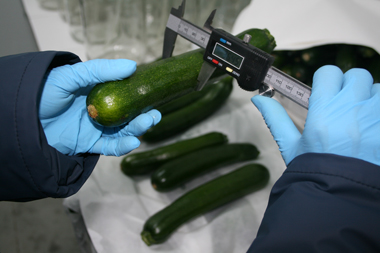
Los frutos fueron cultivados bajo las prácticas habituales de riego, control de plagas y enfermedades.
Material y métodos
Un total de 185 muestras de frutos de calabacín pertenecientes a 14 accesiones, y de 17 variedades comerciales, fueron utilizadas en este estudio. Estas fueron cultivadas durante tres campañas consecutivas (2009 a 2012).
Material vegetal
Tras ser germinadas, las plántulas de calabacín fueron trasplantadas a sacos de perlita (Grodan BV, 6040KD Roermond, NL) ubicados en un invernadero (36º 46' N, 2º 48' O). Para el crecimiento de éstas se siguieron las prácticas culturales locales referentes al riego, control de plagas y enfermedades. Cada variedad estuvo representada por al menos 3 frutos. Aproximadamente 100 g de muestra de calabacín fresco fue liofilizado (Telstar, Terrasa, Spain) hasta conseguir peso constante. Finalmente, las muestras fueron finamente molidas.
Análisis del contenido en fenólicos totales
Análisis Nirs
Tras la liofilización, los frutos de calabacín fueron finamente molidos. El registro de espectros NIR se llevó a cabo con un espectrofotómetro NIR (NIRSystems model 6500, Foss NIR Systems, Inc, Silver Spring, MD, USA) en modo de reflectancia, realizando un barrido desde los 400 a 2.500 nm (regiones visible e infrarroja cercana), Los valores de absorbancia (log 1/R, donde R es la reflectancia) fueron registrados en intervalos de 2 nm. Las ecuaciones de calibración para los CFT, tanto en piel como en pulpa, así como el tratamiento quimiométrico de los datos se llevaron a cabo mediante la aplicación informática Global v, 1,50 (Winisi II, Infrasoft International, LLC, Port Matilda, PA, USA). Las ecuaciones de calibración se obtuvieron usando los datos de absorbancia (log 1/R), o derivadas de segundo orden de los datos log 1/R, mediante diferentes combinaciones referentes a tamaño del segmento de derivación y suavizado. Longitudes de onda desde los 400 a 2.500 nm cada 8 nm fueron empleadas para el desarrollo de las ecuaciones de calibración. Se usó el algoritmo de mínimos cuadrados parciales modificados (MPLS) para correlacionar los datos espectrales con la información de CFT de las muestras.
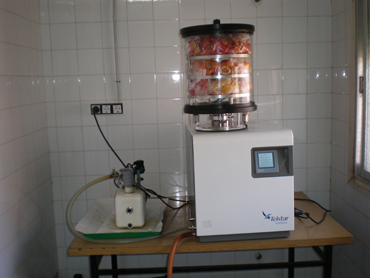
Aproximadamente 100g de muestra de calabacín fresco fue liofilizado hasta conseguir un peso constante.
La validación cruzada fue usada para determinar el número óptimo de términos a usar en la ecuación (Shenk y Westerhaus, 1991), y determinar el error de la predicción (SECV) mostrado por las diferentes ecuaciones desarrolladas.
El método de validación cruzada fue también empleado para identificar aquellas muestras 'outliers' mediante el valor químico (t) o espectral (H). Las muestras ‘t outliers’ son muestras que tienen una relación entre su valor de referencia y el valor espectral que difieren del valor de otras muestras de la población (valores de t > 2,5). Un valor identificado como H outlier significa que una muestra es espectralmente diferente al resto de las muestras de la población.
Resultados y discusión
La Tabla 1 muestra la composición en CFT de las muestras empleadas para el estudio. Tanto la media como la desviación estándar (DE) para el CFT fue semejante en ambos tejidos. El rango en el contenido de CFT fue similar en exocarpo y mesocarpo, mostrando valores desde 2,76 a 5,07 mg/g ps y de 1,72 a 4,37 mg/g ps, respectivamente.

Tabla 1: Estadística descriptiva para el contendido en compuestos fenólicos en las muestras de calabacín estudiadas en este trabajo mg/g ps.
Éstos resultados fueron análogos a los obtenidos previamente en calabaza por otros autores (Oloyede et al., 2012). Sin embargo, diferentes investigaciones han encontrado valores en CFT ligeramente mayores en otros frutos perteneciente a la familia Cucurbitaceae (Mongkolsilp et al., 2004).
Para determinar la capacidad predictiva de las ecuaciones se consideró aquella que poseía el mayor coeficiente de determinación en la validación cruzada (r2cval) y el mayor ratio entre la DE y SECV, definido como RPD (Williams, 1987). La Tabla 2 muestra la capacidad predictiva de las ecuaciones desarrolladas para CFT para exocarpo, mesocarpo y exocarpo+mesocarpo en frutos de calabacín. Teniendo en consideración estos estadísticos, la predicción de CFT fue superior con la segunda derivada espectral (2,10,5,1), para el caso de mesocarpo y, exocarpo + mesocarpo; mientras que para la población de exocarpo fue la primera derivada (1,4,4,1) con la que se obtuvieron mejores resultados. Por otro lado, en la tabla 2 se muestra como la capacidad predictiva de la ecuación para la predicción de CFT en mesocarpo presentó mejores resultados (r2cval =0,75) que al calibrar el tejido formado por el exocarpo de los frutos (r2cval =0,14), o cuando se consideraron simultáneamente ambas poblaciones en la calibración, exocarpo+mesocarpo (r2cval =0,59).
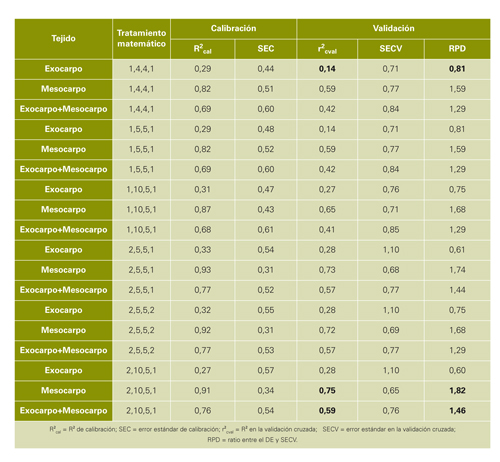
Según los valores de RPD obtenidos para los diferentes tejidos de calabacín en estudio, las ecuaciones obtenidas podrían ser útiles para propósitos de muestreo, siguiendo las recomendaciones propuestas por Williams y Sobering (1996), que establecieron diferentes grupos en función del valor del ratio: valores de RPD menores a 1,5 son considerados como no útiles, valores comprendidos entre 1,5-2,0 pueden ser empleados para predicciones aproximadas, aquellos entre 2,0-2,5 permiten desarrollar predicciones cuantitativas, mientras que valores mayores de 3,0 pueden ser considerados para hacer buenas y excelentes modelos predictivos. En base a estas consideraciones, se podría afirmar que los modelos basados en la espectroscopía Vis/ Nirs obtenidos son válidos para desarrollar ecuaciones cuantitativas capaces de predecir valores aproximados de CFT en mesocarpo (RPD = 1,82) y exocarpo+mesocarpo (RPD = 1,46). Sin embargo, los mejores resultados para el caso de exocarpo (RPD = 0,81) (cuya población estaba compuesta por 65 muestras) indican que se debería de aumentar la población de muestras al objeto de introducir variabilidad en los CFT de este tejido.
Conclusiones
La tecnología Nirs es una técnica altamente empleada para la determinación de parámetros de calidad en productos vegetales. En este trabajo se ha puesto de manifiesto el potencial de la tecnología Nirs para la predicción rápida del contenido en fenólicos totales en frutos de calabacín, así como la determinación de los modelos matemáticos que mejores resultados ofrecen en la calibración de estos compuestos. Las ecuaciones obtenidas para la predicción del CFT en el mesocarpo del calabacín mostraron una buena precisión. Por este motivo, la tecnología Nirs puede ser empleada en programas de mejora genética y en control rutinario de la industria alimentaria con la finalidad de reducir el trabajo de laboratorio para la cuantificación de CFT. Una vez sean seleccionadas las muestras cuyo contenido en CFT se encuentre en el rango de interés, se procedería a analizar las mismas mediante las técnicas de laboratorio convencionales.
Agradecimientos
Este trabajo ha sido financiado por el Proyecto RTA2009-00036-00-00 (Inia) y Fondos Feder. M.T. Blanco-Díaz agradece la financiación por el Ministerio de Economía y Competitividad a través del Programa de Formación de Personal Investigador, Fpi-Inia.
Bibliografía
- Mongkolsilp. S., Pongbupakit. I., Sae-Lee. N., and Sitthithaworn. W. (2004). Radical scavenging activity and total phenolic content of medicinal plants used in primary health care SWU. Journal of Pharmaceutical Sciences 9. No. 1. November.
- Oloyede. F.M., Agbaje. G.O., Obuotor. E.M., and Obisesan. I.O. (2012). Nutritional and antioxidant profiles of pumpkin (Cucurbita pepo Linn.) immature and mature fruits as influenced by NPK fertilizer. Food Chemistry 135. 460–463.
- Sellappan. S., Akoh. C.C., and Krewer. G. (2002). Phenolic compounds and antioxidant capacity of Georgia-grown blueberries and blackberries. Journal of Agricultural and Food Chemistry 50. 2432–2438.
- Shenk. J.S., and Westerhaus. M.O. (1991). Population structuring of near infrared spectra and modified partial least squares regression. Crop Science 31. 1548-1555.
- Shenk. J.S., and Westerhaus. M.O. (1996). Calibration the ISI way. In: Near Infrared Reflectance Spectroscopy. The Future Waves. Davies. A.M.C. and Williams. Ph. (eds). NIR Publications. Chichester. UK. 198-202.
- Williams. P.C. (1987). Variables affecting near-infrarred reflectance scpectroscopy analysis. In: Agricultural in Near Infrared Technology and Food Industries. AACC Inc.. St. Paul. MN. 145–169.


